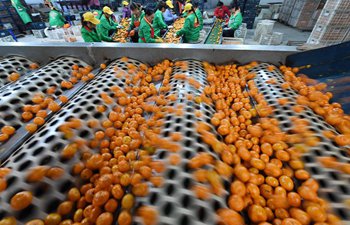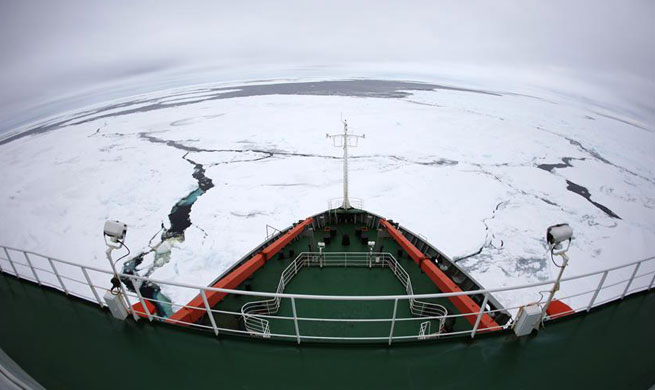UNITED NATIONS, Dec. 5 (Xinhua) -- The United Nations on Tuesday launched the Global Soil Organic Carbon Map on World Soil Day, calling for "caring the ground we walk on."
Soil is a major carbon storage system, essential for sustainable agriculture and climate change mitigation, the United Nations agriculture agency said, launching the comprehensive global map showing the amount of carbon stocks contained in soil.
"Soil is the foundation of agriculture, it is where food begins," said Maria Helena Semedo, Deputy Director-General of the UN Food and Agriculture Organization (FAO).
"Maintaining the soil's important functions and ecosystem services to support food production and increase resilience to a changing climate calls for sustainable soil management practices," she added.
The world's soils act as the largest terrestrial carbon sink, reducing greenhouse gases. Intensifying its role could significantly offset the rapid rise of carbon dioxide in the atmosphere.
In an historic decision on agriculture, the 2017 UN Climate Change Conference in Bonn (COP23 ) recognized the need for improved soil carbon, soil health and soil fertility. The Global Soil Organic Carbon Map, the most comprehensive to date, illustrates the amount of organic carbon stock in the first 30 cm of soil, revealing natural areas with high carbon storage that require conservation along with regions where further sequestration would be possible.
This information can prove a powerful tool to guide decision-making on practices aimed to preserve and increase the current soil carbon stocks, helping win the fight against climate change.
The map shows that globally the first 30 cm of soil contains around 680 billion tons of carbon, almost double the amount present in our atmosphere.
The degradation of one third of the world's soils has already prompted an enormous release of carbon into the atmosphere. Restoring these soils can remove up to 63 billion tons of carbon, significantly reducing the effects of climate change.
The next step is for countries to monitor their national soil information systems for organic carbon levels to make evidence-based decisions on how to manage and monitor their soils.
December 5 is World Soil Day, a day set aside by the United Nations to acknowledge the importance of healthy soil and to advocate for the sustainable management of soil resources.

















